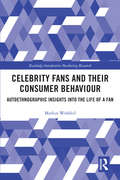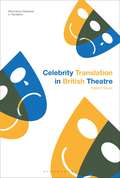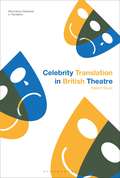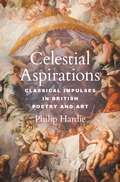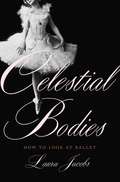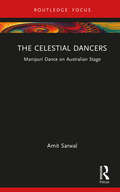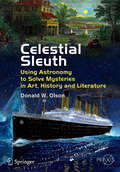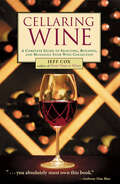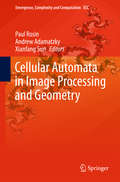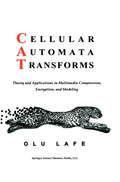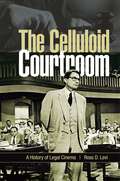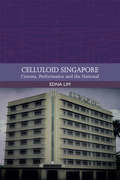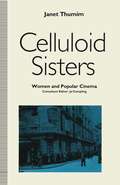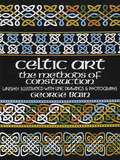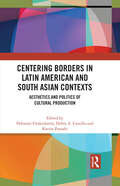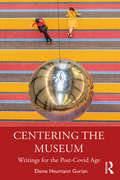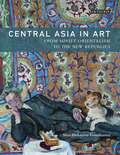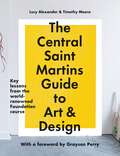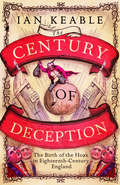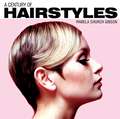- Table View
- List View
Celebrity Fans and Their Consumer Behaviour: Autoethnographic Insights into the Life of a Fan (Routledge Interpretive Marketing Research)
by Markus WohlfeilEver since the dawn of the Hollywood star system in the early 1920s, consumers have been fascinated by film stars and other celebrities and their seemingly glamorous private lives. The public demand for celebrities has become so pervasive that it is arguably an essential element of our everyday culture and market economy, and the focus of increasing study. This book explores the widespread phenomenon of celebrity fandom and provides a deeper understanding of why individual consumers develop an emotional attachment to their favourite celebrity and what this parasocial fan relationship means in their life. Based on an in-depth insider study of a consumer’s fan relationship with a film actress, the book provides unique insights into the celebrity-fan relationship, revealing the meaning it has for the consumer in everyday life, and how it evolves and expresses itself over time. While this book is primarily located within the field of consumer research, fandom and celebrity are of interest to a variety of academic disciplines. It will appeal to an interdisciplinary audience from marketing and consumer research, film studies, media studies, cultural studies, and sociology.
Celebrity Translation in British Theatre: Relevance and Reception, Voice and Visibility (Bloomsbury Advances in Translation)
by Robert StockThis book explores the impact that high-profile and well-known translators have on audience reception of translated theatre. Using Relevance Theory as a framework, the book demonstrates how prior knowledge of a celebrity translator's contextual background can affect the spectator's cognitive state and influence their interpretation of the play. Three canonical plays adapted for the British stage are analysed: Mark Ravenhill's translation of Life of Galileo by Bertolt Brecht, Roger McGough's translation of Tartuffe by Molière and Simon Stephens' translation of A Doll's House by Henrik Ibsen. Drawing on interviews, audience feedback, reviews, blogs and social media posts, Stock examines the extent to which audiences infer the celebrity translator's own voice from their translations. In doing so, he adds new perspectives to the long-standing debate on the visibility of the translator in both the process of translating and the reception of the translation. Celebrity Translation in British Theatre offers an original approach to theatre translation that sheds light on the culture of celebrity and its capacity to attract new audiences to plays in translation.
Celebrity Translation in British Theatre: Relevance and Reception, Voice and Visibility (Bloomsbury Advances in Translation)
by Robert StockThis book explores the impact that high-profile and well-known translators have on audience reception of translated theatre. Using Relevance Theory as a framework, the book demonstrates how prior knowledge of a celebrity translator's contextual background can affect the spectator's cognitive state and influence their interpretation of the play. Three canonical plays adapted for the British stage are analysed: Mark Ravenhill's translation of Life of Galileo by Bertolt Brecht, Roger McGough's translation of Tartuffe by Molière and Simon Stephens' translation of A Doll's House by Henrik Ibsen. Drawing on interviews, audience feedback, reviews, blogs and social media posts, Stock examines the extent to which audiences infer the celebrity translator's own voice from their translations. In doing so, he adds new perspectives to the long-standing debate on the visibility of the translator in both the process of translating and the reception of the translation. Celebrity Translation in British Theatre offers an original approach to theatre translation that sheds light on the culture of celebrity and its capacity to attract new audiences to plays in translation.
Celestial Aspirations: Classical Impulses in British Poetry and Art (E. H. Gombrich Lecture Series #6)
by Philip HardieA unique look at how classical notions of ascent and flight preoccupied early modern British writers and artistsBetween the late sixteenth century and early nineteenth century, the British imagination—poetic, political, intellectual, spiritual and religious—displayed a pronounced fascination with images of ascent and flight to the heavens. Celestial Aspirations explores how British literature and art during that period exploited classical representations of these soaring themes—through philosophical, scientific and poetic flights of the mind; the ascension of the disembodied soul; and the celestial glorification of the ruler.From textual reachings for the heavens in Spenser, Marlowe, Shakespeare, Donne and Cowley, to the ceiling paintings of Rubens, Verrio and Thornhill, Philip Hardie focuses on the ways that the history, ideologies and aesthetics of the postclassical world received and transformed the ideas of antiquity. In England, narratives of ascent appear on the grandest scale in Milton’s Paradise Lost, an epic built around a Christian plot of falling and rising, and one of the most intensely classicizing works of English poetry. Examining the reception of flight up to the Romanticism of Wordsworth and Tennyson, Hardie considers the Whig sublime, as well as the works of Alexander Pope and Edward Young. Throughout, he looks at motivations both public and private for aspiring to the heavens—as a reward for political and military achievement on the one hand, and as a goal of individual intellectual and spiritual exertion on the other.Celestial Aspirations offers an intriguing look at how creative minds reworked ancient visions of time and space in the early modern era.
Celestial Aspirations: Classical Impulses in British Poetry and Art (E. H. Gombrich Lecture Series #6)
by Philip HardieA unique look at how classical notions of ascent and flight preoccupied early modern British writers and artistsBetween the late sixteenth century and early nineteenth century, the British imagination—poetic, political, intellectual, spiritual and religious—displayed a pronounced fascination with images of ascent and flight to the heavens. Celestial Aspirations explores how British literature and art during that period exploited classical representations of these soaring themes—through philosophical, scientific and poetic flights of the mind; the ascension of the disembodied soul; and the celestial glorification of the ruler.From textual reachings for the heavens in Spenser, Marlowe, Shakespeare, Donne and Cowley, to the ceiling paintings of Rubens, Verrio and Thornhill, Philip Hardie focuses on the ways that the history, ideologies and aesthetics of the postclassical world received and transformed the ideas of antiquity. In England, narratives of ascent appear on the grandest scale in Milton’s Paradise Lost, an epic built around a Christian plot of falling and rising, and one of the most intensely classicizing works of English poetry. Examining the reception of flight up to the Romanticism of Wordsworth and Tennyson, Hardie considers the Whig sublime, as well as the works of Alexander Pope and Edward Young. Throughout, he looks at motivations both public and private for aspiring to the heavens—as a reward for political and military achievement on the one hand, and as a goal of individual intellectual and spiritual exertion on the other.Celestial Aspirations offers an intriguing look at how creative minds reworked ancient visions of time and space in the early modern era.
Celestial Bodies: How To Look At Ballet
by Laura JacobsA distinguished dance critic offers an enchanting introduction to the art of ballet As much as we may enjoy Swan Lake or The Nutcracker, for many of us ballet is a foreign language. It communicates through movement, not words, and its history lies almost entirely abroad--in Russia, Italy, and France. In Celestial Bodies, dance critic Laura Jacobs makes the foreign familiar, providing a lively, poetic, and uniquely accessible introduction to the world of classical dance. Combining history, interviews with dancers, technical definitions, descriptions of performances, and personal stories, Jacobs offers an intimate and passionate guide to watching ballet and understanding the central elements of choreography. Beautifully written and elegantly illustrated with original drawings, Celestial Bodies is essential reading for all lovers of this magnificent art form.
The Celestial Dancers: Manipuri Dance on Australian Stage (Routledge Advances in Theatre & Performance Studies)
by Amit SarwalThe Celestial Dancers: Manipuri Dance on Australian Stage charts the momentous journey of the popularization of Manipur’s Hindu dances in Australia. Tradition has it that the people of Manipur, a northeastern state of India, are descended from the celestial gandharvas, dance and music blessed among them as a God’s gift. The intricately symbolic Hindu dances of Manipur in their original religious forms were virtually unseen and unknown outside India until an Australian impresario, Louise Lightfoot, brought them to the stage in the 1950s. Her experimental changes through a pioneering collaboration with dancers Rajkumar Priyagopal Singh and Ibetombi Devi modernized Manipuri dance for presentation on a global stage. This partnership moved Manipur’s Hindu dances from the sphere of ritualistic temple practice to a formalized stage art abroad. Amit Sarwal chronicles how this movement, as in the case of other prominent Indian classical dances and dancers, enabled both Manipuri dance and dancers to gain recognition worldwide. This book is ideal for anyone with an interest in Hindu temple dance, Manipur dance, cross-cultural collaborations and the globalizing of Indian Classical Dance. The Celestial Dancers is a comprehensive study of how an exceptional Hindu dance form developed on the global stage.
The Celestial Dancers: Manipuri Dance on Australian Stage (Routledge Advances in Theatre & Performance Studies)
by Amit SarwalThe Celestial Dancers: Manipuri Dance on Australian Stage charts the momentous journey of the popularization of Manipur’s Hindu dances in Australia. Tradition has it that the people of Manipur, a northeastern state of India, are descended from the celestial gandharvas, dance and music blessed among them as a God’s gift. The intricately symbolic Hindu dances of Manipur in their original religious forms were virtually unseen and unknown outside India until an Australian impresario, Louise Lightfoot, brought them to the stage in the 1950s. Her experimental changes through a pioneering collaboration with dancers Rajkumar Priyagopal Singh and Ibetombi Devi modernized Manipuri dance for presentation on a global stage. This partnership moved Manipur’s Hindu dances from the sphere of ritualistic temple practice to a formalized stage art abroad. Amit Sarwal chronicles how this movement, as in the case of other prominent Indian classical dances and dancers, enabled both Manipuri dance and dancers to gain recognition worldwide. This book is ideal for anyone with an interest in Hindu temple dance, Manipur dance, cross-cultural collaborations and the globalizing of Indian Classical Dance. The Celestial Dancers is a comprehensive study of how an exceptional Hindu dance form developed on the global stage.
Celestial Sleuth: Using Astronomy to Solve Mysteries in Art, History and Literature (Springer Praxis Books)
by Donald W. OlsonFor a general audience interested in solving mysteries in art, history, and literature using the methods of science, 'forensic astronomy' is a thrilling new field of exploration. Astronomical calculations are the basis of the studies, which have the advantage of bringing to readers both evocative images and a better understanding of the skies. Weather facts, volcano studies, topography, tides, historical letters and diaries, famous paintings, military records, and the friendly assistance of experts in related fields add variety, depth, and interest to the work. The chosen topics are selected for their wide public recognition and intrigue, involving artists such as Vincent van Gogh, Claude Monet, Edvard Munch, and Ansel Adams; historical events such as the Battle of Marathon, the death of Julius Caesar, the American Revolution, and World War II; and literary authors such as Chaucer, Shakespeare, Joyce, and Mary Shelley. This book sets out to answer these mysteries indicated with the means and expertise of astronomy, opening the door to a richer experience of human culture and its relationship with nature. Each subject is carefully analyzed. As an example using the study of sky paintings by Vincent van Gogh, the analytical method would include: - computer calculations of historical skies above France in the 19th century - finding and quoting the clues found in translations of original letters by Van Gogh - making site visits to France to determine the precise locations when Van Gogh set up his easel and what celestial objects are depicted. For each historical event influenced by astronomy, there would be a different kind of mystery to be solved. As an example: - How can the phase of the Moon and time of moonrise help to explain a turning point of the American Civil War - the fatal wounding of Stonewall Jackson at Chancellorsville in 1863? For each literary reference to astronomy, it was determined which celestial objects were being described and making an argument that the author is describing an actual event. For example, what was the date of the moonlit scene when Mary Shelley first had the idea for her novel “Frankenstein?”These and more fun riddles will enchant and delight the fan of art and astronomy.
Cellaring Wine: A Complete Guide to Selecting, Building, and Managing Your Wine Collection
by Jeff CoxEnjoy the rich and complex flavors of wine that&’s been matured to its peak. In this comprehensive guide, Jeff Cox provides everything you need to know to build and maintain your own wine cellar. Whether you&’re thinking of storing a few extra bottles in a spare closet or are looking to properly age a garage full of wine, you&’ll find straightforward advice and helpful hints on successful cellaring techniques. Build and delight in your collection of wine while learning how to bring out the full potential of every bottle.
Cellular Automata in Image Processing and Geometry (Emergence, Complexity and Computation #10)
by Paul Rosin Andrew Adamatzky Xianfang SunThe book presents findings, views and ideas on what exact problems of image processing, pattern recognition and generation can be efficiently solved by cellular automata architectures. This volume provides a convenient collection in this area, in which publications are otherwise widely scattered throughout the literature. The topics covered include image compression and resizing; skeletonization, erosion and dilation; convex hull computation, edge detection and segmentation; forgery detection and content based retrieval; and pattern generation. The book advances the theory of image processing, pattern recognition and generation as well as the design of efficient algorithms and hardware for parallel image processing and analysis. It is aimed at computer scientists, software programmers, electronic engineers, mathematicians and physicists, and at everyone who studies or develops cellular automaton algorithms and tools for image processing and analysis, or develops novel architectures and implementations of massive parallel computing devices.The book will provide attractive reading for a general audience because it has do-it-yourself appeal: all the computer experiments presented within it can be implemented with minimal knowledge of programming. The simplicity yet substantial functionality of the cellular automaton approach, and the transparency of the algorithms proposed, makes the text ideal supplementary reading for courses on image processing, parallel computing, automata theory and applications.
Cellular Automata Transforms: Theory and Applications in Multimedia Compression, Encryption, and Modeling (Multimedia Systems and Applications #16)
by Olurinde LafeCellular Automata Transforms describes a new approach to using the dynamical system, popularly known as cellular automata (CA), as a tool for conducting transforms on data. Cellular automata have generated a great deal of interest since the early 1960s when John Conway created the `Game of Life'. This book takes a more serious look at CA by describing methods by which information building blocks, called basis functions (or bases), can be generated from the evolving states. These information blocks can then be used to construct any data. A typical dynamical system such as CA tend to involve an infinite possibilities of rules that define the inherent elements, neighborhood size, shape, number of states, and modes of association, etc. To be able to build these building blocks an elegant method had to be developed to address a large subset of these rules. A new formula, which allows for the definition a large subset of possible rules, is described in the book. The robustness of this formula allows searching of the CA rule space in order to develop applications for multimedia compression, data encryption and process modeling. Cellular Automata Transforms is divided into two parts. In Part I the fundamentals of cellular automata, including the history and traditional applications are outlined. The challenges faced in using CA to solve practical problems are described. The basic theory behind Cellular Automata Transforms (CAT) is developed in this part of the book. Techniques by which the evolving states of a cellular automaton can be converted into information building blocks are taught. The methods (including fast convolutions) by which forward and inverse transforms of any data can be achieved are also presented. Part II contains a description of applications of CAT. Chapter 4 describes digital image compression, audio compression and synthetic audio generation, three approaches for compressing video data. Chapter 5 contains both symmetric and public-key implementation of CAT encryption. Possible methods of attack are also outlined. Chapter 6 looks at process modeling by solving differential and integral equations. Examples are drawn from physics and fluid dynamics.
The Celluloid Courtroom: A History of Legal Cinema (Non-ser.)
by Ross D. LeviThe genre of legal cinema is an extensive and revealing one: it is a body of films that depicts lawyers, clients, criminals, judges, and juries, often not as they actually are, but as we would like them to be. The idealized courtroom of many legal movies tells us a great deal about what we think of our justice system and what we want it to reflect about America, but the films in the genre vary widely in how they do this. From To Kill a Mockingbird to Liar, Liar, from A Time to Kill to Twelve Angry Men, we see certain stereotypes repeating themselves again and again: the judge as stern referee, the jury as an ultimately fair body of decisionmakers, the lawyer as hardworking and passionate fighter for the underdog. In this new and comprehensive study of this understudied category of film, author Ross D. Levi argues that, contrary to popular belief, legal movies show us a system that is far more fair than our actual one, with corruption downplayed and greed made subordinate to compassion and compromise. With a comprehensive filmography, penetrating analysis—both cinematic and legal—and engaging discussion of a wide array of movies, The Celluloid Courtroom is an indispensable guide to a key aspect of American movies and American justice.The genre of legal cinema is an extensive and revealing one: it is a body of films that depicts lawyers, clients, criminals, judges, and juries, often not as they actually are, but as we would like them to be. The idealized courtroom of many legal movies tells us a great deal about what we think of our justice system and what we want it to reflect about America, but the films in the genre vary widely in how they do this. From To Kill a Mockingbird to Liar, Liar, from A Time to Kill to Twelve Angry Men, we see certain stereotypes repeating themselves again and again: the judge as stern referee, the jury as an ultimately fair body of decisionmakers, the lawyer as hardworking and passionate fighter for the underdog. In this new and comprehensive study of this understudied category of film, author Ross D. Levi argues that, contrary to popular belief, legal movies show us a system that is far more fair than our actual one, with corruption downplayed and greed made subordinate to compassion and compromise.These are films that have affected as much as reflected the American justice system, as we enter the courts hoping, often against hope, that they will be something like what we've seen in the movies. With a comprehensive filmography, penetrating analysis—both legal and cinematic—and engaging and enlightening discussion, The Celluloid Courtroom is an indispensable guide to a key aspect of American movies and American justice.
Celluloid Singapore: Cinema, Performance and the National (Traditions In World Cinema Ser.)
by Edna LimExamines how pre-modernist conceptions and social organizations of pleasure have impacted post-WWII film
Celluloid Singapore: Cinema, Performance and the National
by Edna LimUnlock the potential of corpus linguistics for language learning
Celluloid Sisters: Women And Popular Cinema
by Janet ThumimTaking De Lauretis' proposition that popular cinema is a 'technology of gender' the book explores the representation of women and the readerly activity of female audience members in respect of a group of eighteen films successful at the British box office between 1945 and 1965. A method for the analysis of fictional characters is presented and the discursive context within which contemporary meanings were formed is explored through reference to the press, particularly that addressed to a female readership.
Celtic Art: The Methods of Construction
by George BainThe construction principles of Celtic art were re-discovered in the middle of the 20th century by George Bain. Until his writing, the intricate knots, interlacings, and spirals used in illuminating The Book of Kells and in decorating craftwork and jewelry seemed almost impossible, "the work of angels." In this pioneering work, George Bain shows how simple principles, no more difficult than those used in needlecraft, were used to create some of the finest artistic works ever seen. He also explains how you can use these principles in re-creating artifacts and in creating your own Celtic designs for art and craft work or even for recreational use.Step-by-step procedures carefully introduce the simple rules and methods of Celtic knot work and the well-known designs from the great manuscripts and stone work. Later chapters build up to complex knot work, spiral work, and key pattern designs, with special coverage of alphabets and the stylized use of animals, humans, and plants. Altogether over 225 different patterns are presented for your use, with hundreds of modification suggestions, 110 historical and modern artifacts showing designs in use, a great number of letters including six complete alphabets and 25 decorative initials, and a number of animal and human figures used in the original Celtic works.Artists, students, craftspeople, even children can work with these patterns and instructions for creating dynamic designs for use in leather work, in embroidery and other needle work, in metalwork, jewelry making, card design, borders, panels, illuminations, and in countless other ways. Mathematicians will find a great deal of pleasure in the geometric principles on which the patterns are based. Art historians and others interested in studying Celtic art will find a great number of outstanding art works and the best presentation in English for understanding Celtic design.
Centering Borders in Latin American and South Asian Contexts: Aesthetics and Politics of Cultural Production
by Debaroti ChakrabortyThis book presents inter-disciplinary research on contemporary borders with contributions from scholars and cultural practitioners located in different contexts in the Americas and South Asia. There has been significant sociological work on borders; however there is a relative dearth of humanities research on contemporary border realities, particularly in South Asia. This volume introduces frameworks of critical insights and knowledge on border narratives and cultural productions. It addresses and goes beyond the impact of the partition in South Asia to train a unique comparative and aesthetic lens on borders and borderlands in relation to Latin America and the U.S.A. through oral narratives, photographs, ‘objects’, films, theatre, journals, and songs. It maps border perspectives and their reception in a framework of cultural politics. It revolves around themes such as violence and modes of survival; women’s narratives of migration, trafficking and incarceration; abduction of children; vulnerability as experience; rationalities of mass killings; and proliferation of countercultures to map border perspectives in a framework of cultural politics. First of its kind, the volume will be useful to scholars and researchers of comparative literary and cultural studies, South Asian studies, Latin American studies, border studies, arts and aesthetics, visual studies, sociology, comparative politics, international relations, and peace and conflict resolution studies.
Centering Borders in Latin American and South Asian Contexts: Aesthetics and Politics of Cultural Production
by Debaroti Chakraborty Debra A. Castillo Kavita PanjabiThis book presents inter-disciplinary research on contemporary borders with contributions from scholars and cultural practitioners located in different contexts in the Americas and South Asia. There has been significant sociological work on borders; however there is a relative dearth of humanities research on contemporary border realities, particularly in South Asia. This volume introduces frameworks of critical insights and knowledge on border narratives and cultural productions. It addresses and goes beyond the impact of the partition in South Asia to train a unique comparative and aesthetic lens on borders and borderlands in relation to Latin America and the U.S.A. through oral narratives, photographs, ‘objects’, films, theatre, journals, and songs. It maps border perspectives and their reception in a framework of cultural politics. It revolves around themes such as violence and modes of survival; women’s narratives of migration, trafficking and incarceration; abduction of children; vulnerability as experience; rationalities of mass killings; and proliferation of countercultures to map border perspectives in a framework of cultural politics. First of its kind, the volume will be useful to scholars and researchers of comparative literary and cultural studies, South Asian studies, Latin American studies, border studies, arts and aesthetics, visual studies, sociology, comparative politics, international relations, and peace and conflict resolution studies.
Centering the Museum: Writings for the Post-Covid Age
by Elaine Heumann GurianDrawing on Elaine Heumann Gurian’s fifty years of museum experience, Centering the Museum calls on the profession to help visitors experience their shared humanity and find social uses for public buildings, in order to make museums more central and useful to everyone in difficult times. Following the same format as Civilizing the Museum, this new volume includes material written especially for a re-emergent time and relevant public lectures not included in the author’s previous book. Divided into six separate content clusters, with over twenty different essays, the book identifies many small, subtle ways museums can become welcoming to more—and to all. Drawing on her extensive experience as a deputy director, senior advisor to high-profile government museums, lecturer and teacher around the world, the author provides recommendations for inclusive actions by intertwining sociological thinking with practical decision-making strategies. Writing reflectively, Elaine also provides heritage students and professionals with insights that will help move their careers and organizations into more equitable, yet successful, terrain. Centering the Museum will be an excellent companion volume to Civilizing the Museum and, as such, will be a useful support for emerging museum leaders. It will be especially interesting to academics and students engaged in the study of cultural administration, as well as museum and heritage practitioners working around the world.
Centering the Museum: Writings for the Post-Covid Age
by Elaine Heumann GurianDrawing on Elaine Heumann Gurian’s fifty years of museum experience, Centering the Museum calls on the profession to help visitors experience their shared humanity and find social uses for public buildings, in order to make museums more central and useful to everyone in difficult times. Following the same format as Civilizing the Museum, this new volume includes material written especially for a re-emergent time and relevant public lectures not included in the author’s previous book. Divided into six separate content clusters, with over twenty different essays, the book identifies many small, subtle ways museums can become welcoming to more—and to all. Drawing on her extensive experience as a deputy director, senior advisor to high-profile government museums, lecturer and teacher around the world, the author provides recommendations for inclusive actions by intertwining sociological thinking with practical decision-making strategies. Writing reflectively, Elaine also provides heritage students and professionals with insights that will help move their careers and organizations into more equitable, yet successful, terrain. Centering the Museum will be an excellent companion volume to Civilizing the Museum and, as such, will be a useful support for emerging museum leaders. It will be especially interesting to academics and students engaged in the study of cultural administration, as well as museum and heritage practitioners working around the world.
Central Asia in Art: From Soviet Orientalism to the New Republics
by Aliya Abykayeva-TiesenhausenIn the midst of the space race and nuclear age, Soviet Realist artists were producing figurative oil paintings. Why? How was art produced to control and co-opt the peripheries of the Soviet Union, particularly Central Asia? Presenting the 'untold story' of Soviet Orientalism, Aliya Abykayeva-Tiesenhausen re-evaluates the imperial project of the Soviet state, placing the Orientalist undercurrent found within art and propaganda production in the USSR alongside the creation of new art forms in Kazakhstan, Kyrgyzstan and Uzbekistan. From the turmoil of the 1930s through to the post-Stalinist era, the author draws on meticulous new research and rich illustrations to examine the political and social structures in the Soviet Union - and particularly Soviet Central Asia - to establish vital connections between Socialist Realist visual art, the creation of Soviet identity and later nationalist sentiments.
Central Saint Martins Foundation: Key lessons in art and design
by Lucy Alexander Timothy Meara Central Saint MartinsExplore and expand your creative skill set with The Central Saint Martins Guide to Art & Design, fully updated in 2023 in line with the current course, with a new afterword by Rathna Ramanathan, Head of Central Saint Martins.Guided by key lessons from college tutors, you'll learn to expand your creative abilities and develop your own visual language. Exclusive projects from the world-class Central Saint Martins Foundation Diploma in Art and Design will inspire your experiments and unlock your potential across four key areas: communication design, fashion and textiles, fine art and three-dimensional design. No matter which discipline you choose to pursue, this book will help you discover who you want to be and set you on the path to achieving it.'Do you care about heartbreaking beauty, fresh new ideas, astounding craftsmanship, ingenious solutions, the tingle of a shocking image? Would you make art even if it wasn't your job? Then this is the book for you' - Grayson Perry
The Century of Deception: The Birth of the Hoax in Eighteenth-Century England
by Ian Keable‘Utter joy! A delicious romp through the heyday of balderdash and grand-scale deception, penned by one of the country’s finest magical minds.’ Derren BrownIn 1749, a newspaper advertisement appeared declaring that a man would climb inside a bottle on the stage of a London theatre. Although the crowds turned up in their hundreds to witness the trick, the performer didn’t. Over the following decades, elaborate pranks would continue to bamboozle audiences across England.In The Century of Deception, magician and magic historian Ian Keable tells the engrossing stories of these eighteenth-century hoaxes and those who were duped by them. The English public were hoodwinked time and time again, swallowing whole tales of rapping ghosts, a woman who gave birth to rabbits, a levitating Frenchman in a Chinese Temple and outrageous astrological predictions. Not only were the hoaxes widely influential, drawing in celebrities such as Samuel Johnson, Benjamin Franklin and Jonathan Swift, they also inflamed concerns about ‛English credulity’.‘Fake news’ and ‛going viral’ may be modern terms, but as this entertaining, eye-opening book shows, these concepts have been with us for centuries. ‘A fascinating, witty and beautifully-written book.’ Matt Lucas ‘Ian Keable’s brilliant book has opened my eyes to an incredible world of hoaxers and deceivers that I didn’t know even existed. A cracking read filled with extraordinary stories.’ Andy Nyman 'A masterful and fascinating journey into a hitherto hidden world of history, mystery and hoaxes.' Richard Wiseman
A Century of Hairstyles (Century Of Ser.)
by Pamela Church GibsonNothing defines a person like their hairstyle – and what a century it has been for hair! Bangs, bobs, buns, beehives and bouffants have vied with pixie cuts, pin curls, perms and pageboys for ascendancy in an ever-changing parade of ladies' looks and trends, and amongst the men we've seen caesers, comb overs, ducktails, faux hawks, flattops, quiffs and slick backs. From the Edwardian era through the seismic changes of the 1920s and '60s, and including every quirky twist hair history took on its way to the turn of the millennium, this book is a lush visual survey of a hundred years of hairstyles.
